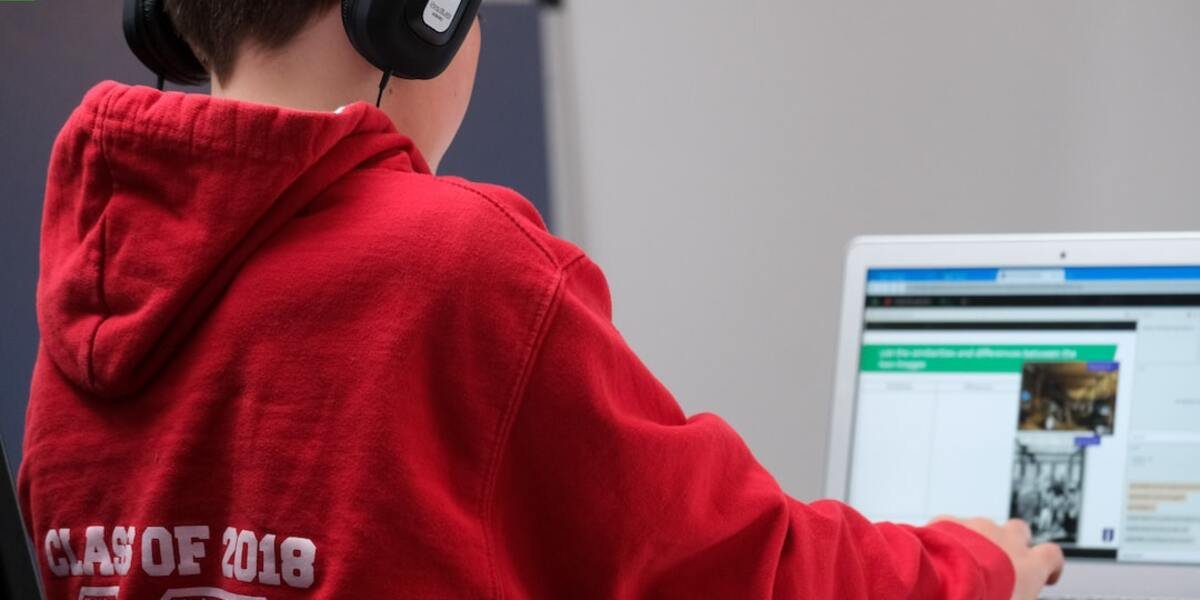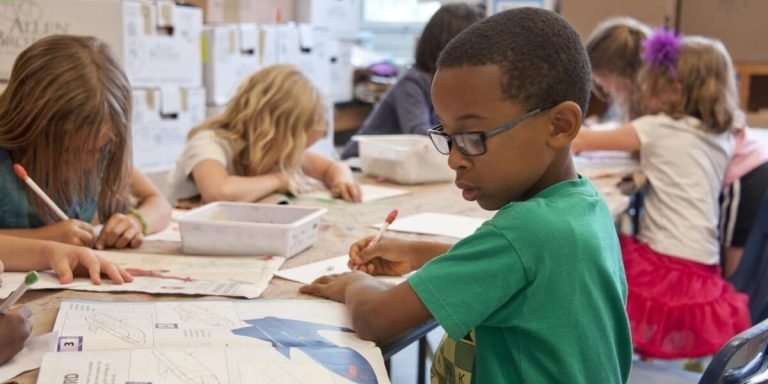How Old Are 8th Graders? Understanding the Stage of Adolescence They’re In
The question “how old are 8th graders?” may seem simple, but it opens the door to a deeper comprehension of not only their age group, but also what stage in adolescence they find themselves. Whether you’re an educator or parent trying to navigate middle school education and development, understanding this critical phase can be quite enlightening.
This blog serves as your guide into the world that 8th graders inhabit – which is often marked by rapid developmental changes – both physically and psychologically. Understanding these complexities will help enhance how we interact with them at home and shape instructional strategies within our classrooms for effective learning.
Did you know?
Despite the physical growth spurt, did you know that the brain of an 8th grader, typically aged 13-14 years old, is not fully developed yet? Interestingly enough, their prefrontal cortex – responsible for decision making and judgement – continues to mature until their mid-20s.
Understanding the Age Range of 8th Grade Students
Understanding the age range of 8th grade students is crucial for educators, parents and even peers. Typically, children who are in 8th grade fall within the age bracket of thirteen to fourteen years old. However, there may be exceptions due to various factors such as a child’s school readiness at kindergarten level or individual cognitive development.
In relation to technology integration in education – this becomes notably significant when considering those aged between thirteen and fourteen years old make up a large majority of today’s digital natives. They have grown up during an era where tablets replaced textbooks and lessons progressively moved from traditional classrooms onto virtual platforms.
These middle schoolers’ familiarity with technology presents meaningful opportunities for enhancing educational experiences. Their natural aptitude towards navigating modern devices can streamline learning processes through interactive applications that cater specifically to their academic needs while engaging them more effectively than conventional methods often do. This tech-driven approach not only cultivates essential digital literacy skills but also empowers these young learners by fostering independent thinking capacities– critical components needed for future success.
The landscape of middle school education has undergone revolutionary changes over time; its synergy with technology being one amongst many key developments witnessed over recent decades amid rapid advancements prolific in our current year —2023— making understanding the age group an integral part of productive classroom management strategies now more ever before.
Average Age Breakdown for Middle Schoolers
In most circumstances, students in the eighth grade fall between thirteen to fourteen years of age. However, there might be exceptions depending on when a child began school and whether they skipped or repeated grades.
As these middle schoolers step out from being pre-teens into their early teenage years, many cognitive changes occur. Their ability to think abstractly improves significantly during this time period—enabling them to better understand complex subjects like Algebraic concepts that often get introduced as part of Middle School Education.
Nonetheless, traditional methods may not suffice in holding the attention span of students in this dynamic phase. Hence enters Technology Integration! As we walk further down in 2023 where technology permeates every sphere including education – integrating it within classroom settings can greatly enhance student engagement and comprehension levels.
1) Makes Learning More Interactive – The active use of multimedia such as videos and animations could aid visual learners grasp sophisticated topics quite efficiently compared with textual content alone.
2) Personalization – With adaptive technology-based tools available today tailored lessons catering to individual learner pace and interest becomes feasible making education more inclusive than ever before!
Factors Influencing the Variability in Student Ages
Determining the age range of 8th grade students is a task that can be influenced by various factors. Firstly, let’s demystify “how old are 8th graders”. Generally speaking, most eight graders in American schools sit between the ages of thirteen to fourteen years.
However, there might be an occasional slight variation due to different circumstances.
One key influence comes from when children first enter school. Some parents choose early enrollment for their kids out of eagerness for them to start learning or based on their level of readiness and development progress compared with other kids at their age group. On the flip side though if we consider late enrollment situations whereby some parents decide it would benefit more if they delayed starting formal education until they reach six instead.
Additionally, considering international learners offers another perspective about how old are 8th graders? Families immigrating from countries where schooling may begin later could have older eighth-grade students than typical US norms suggest.
Another factor causing variability in student ages can lie within academic advancement or retention policies implemented across districts nationally! A particularly gifted child who moved quickly through previous grades may find themselves among younger peers while repeat year scenarios because struggling academically holds potential opposite effect – placing slightly elder ones into mix alongside regular class members!
The Significance of Age in 8th Grade Educational Development
The age of an 8th grader plays a key role in their educational development, especially in the context of technology integration. Typically ranging from thirteen to fourteen years old, this phase represents crucial cognitive and emotional growth stages for these middle school students. Given our advance into the digital age with ever-evolving technologies being introduced yearly and even monthly, understanding how well a child adapts to such modern advancements becomes increasingly significant.
In addition, an eighth grade education provides many opportunities for children to hone specific technological skills necessary for future endeavors. Besides merely grasping fundamental academic concepts like math or language arts at this stage—students also get exposed to navigating digital platforms safely and responsibly through newly integrated tech-based curricula mandated by numerous progressive educational systems globally.
Moreover, it is essential to keep pace with current trends, which we recognize as vital in 2023. Integrating beneficial technological developments into teaching strategies effectively aligns educationally relevant content with the capabilities of students in each age group. In particular, we focus on thirteen-to-fourteen-year-olds, known as ‘eighth graders‘, who represent the middle school category. This strategic approach creates effective learning environments and develops essential life skills that prepare young learners to become well-rounded individuals equipped to face real-world challenges ahead.
Impact of Age on Learning Abilities and Social Adaptation
Understanding the impact of age on learning abilities and social adaptation for 8th graders can greatly enhance their educational development. The average 8th grader is typically around thirteen to fourteen years old; a critical juncture where both physical and mental changes are taking place rapidly.
At this stage, children display varied learning capabilities with some showing commendable academic prowess while others might need assistance due to slower cognitive growth. As educators or parents, it’s important we understand that these variations owe largely to age differences even within the same grade level.
One significant element at play here is brain maturation which directly links ‘how old are 8th graders’ with their ability to grasp complex concepts. A child’s capacity for logical reasoning, problem-solving, understanding abstract ideas tends mainly towards improvement as they grow older.
The role of technology in aiding such educational transitions cannot be overstated: adaptive online platforms have proven helpful resources catering specifically to individual needs based upon each learner’s pace & aptitude levels.
Concurrently, youngsters also undergo major socio-emotional transformations during these formative years manifesting itself distinctly through enhanced self-awareness and conscientious social relationships – often noticed by increased empathy towards peers coupled with an intense desire for acceptance into peer groups- all predominantly determined by students’ chronological ages too.
Addressing Diverse Educational Needs at Different Ages
Understanding the importance of age in educational development, specifically when addressing 8th graders is crucial. At this stage, students are typically around thirteen or fourteen years old and their needs differ significantly from those of younger children.
As educators and parents, acknowledging these differences can greatly enhance the learning environment for our middle-school kids. One significant aspect to consider at this point is technology integration – a topic that has gained even more relevance in recent times like 2023.
At this age – so how old are 8th-graders actually? Students around thirteen to fourteen find themselves bridging between being young children and teenagers. This transitional period carries its own unique set of challenges as well as opportunities for growth academically.
The diverse educational needs emerging at different ages need careful consideration and tailoring accordingly.
Technology Integration deals with effectively merging digital tools into existing teaching methodologies while enhancing student engagement levels besides academic achievements—considering today’s digitally inclined generation using tech-tools plays an essential role especially within Middle School Education contexts.
Online interactive activities catered towards “how old are eighth graders” group could be science simulations or social studies games tying classroom instruction together with engaging technological aids providing them a fresh perspective on subjects taught in school along with improving critical thinking skills among others.
Transitioning from 8th Grade to High School: What Parents and Educators Should Know
The transition from 8th grade to high school is a significant period in a student’s academic journey. Typically, at this stage – when students are about thirteen or fourteen years old (given that children start kindergarten around age five) – they begin encountering more advanced lessons and experience notable changes not just academically but also emotionally and socially. They must navigate these complexities while managing the anticipations of adjustment to an entirely new environment – moving up to High School.
Pivotal at every step for 8th graders is the role of parents and educators who can provide guidance during their transitional process. Given that it’s now 2023, technology has far-reaching implications on how education is administered, making it incumbent upon both parties involved —the adults responsible for child development— understanding all elements tied with optimizing educational technologies . Technology integration transforms traditional classroom settings into dynamic learning environments which encourage student engagement thus reflecting positively in their academic progression.
Understanding technological tools involves discerning how to integrate them effectively into lesson plans. They should enhance core concepts instead of becoming distractions. Parents and educators must proactively stay updated with the latest ed-tech trends, as middle school education increasingly depends on digital platforms for teaching and learning.
With careful planning and thoughtful implementation, you can make technology an accessible, equitable tool that improves outcomes during the critical transition into high school.
Preparing for Developmental Changes during Eighth Grade Year
Eighth grade is a significant time in your child’s education. It marks the transition from middle school to high school and brings about many developmental changes, both physically and emotionally, often leaving parents wondering ‘how old are 8th graders?’ Typically ranging between 13-14 years of age.
Navigating these transitions can be daunting – luckily there exists an array of resources available specifically designed to help you through this journey. Understanding what lies ahead helps prepare everyone involved for the upcoming dynamic year very effectively.
Firstly, acknowledge that it’s normal for emotions to run high as they deal with increased academic pressure alongside hormonal changes at this stage. Instilling good coping mechanism strategies here will serve them well throughout their lives.
Remember that every young adolescent develops at their own pace—no child should feel rushed or forced into adulthood prematurely.
Secondly, encourage independence within boundaries which allows children tackle bigger responsibilities while feeling secure under your guidance—a critical balance needed when transitioning into adolescence.
It’s essential also not only anticipate but embrace change—in teaching methods especially! High schools today use more technologically driven approaches compared even just few decades ago.
Strategies for Supporting Students Through This Pivotal Stage
Supporting students during the transition from 8th grade to high school is a significant responsibility for both parents and educators. It’s crucial to understand that at this stage, most adolescents are generally between 13-14 years old, making it an intensely formative time in their lives.
1. Empower With Technology: Embrace technology integration which has taken root firmly by the year 2023. Using digital tools can provide unique educational benefits and help make learning more engaging for our tech-savvy younger generation.
2. Foster Independence: As your child navigates towards high school, encourage them to take ownership of their education. This includes managing homework schedules or projects independently – key skills they will need in high school.
3. Address Concerns Openly: During this tricky phase when children wonder how old are 8th graders compared to themselves or older kids, uncertainty might arise leading often great anxiety about moving up into High School level studies having many unknown variables associated with it while reflecting on childhood nostalgia intertwined within phases of incipient adolescence surfacing multifarious emotions all face upfront now!
Conclusion
In grasping the essence of “how old are 8th graders”, we’ve embarked on a journey to understand this crucial phase of adolescence. As parents and educators, it’s essential not just to measure their age in years but also acknowledge the leaps they’re taking towards maturity. The more familiar you find yourself with these changes, the better equipped you’ll be to facilitate your child’s growth both acadically and emotionally.
Inviting curiosity about diverse aspects of childhood education is key for fostering enriching experiences at home or school setting. Feel free to explore our website further; from various educational insights suitable across ages, dynamic teaching trends up until comprehensive support guides crafted especially for parents and educators alike – there’s plenty more where this came from! Our commitment lies in supporting each valuable stage that shapes future generations.







